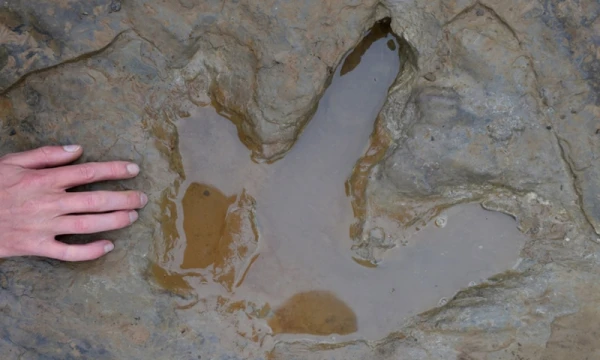
Any local resident knows that Venice is an inverted forest. This Italian city, which is 1604 years old, is built on millions of wooden logs driven into the ground.
Larch, oak, alder, pine, spruce, and elm, ranging from 3.5 m to less than 1 m in length, have held up stone palazzos and tall bell towers for centuries, representing a true engineering marvel that utilizes the forces of physics and nature.
In most modern structures, the work of this inverted forest is performed by reinforced concrete and steel. But despite their strength, few foundations today could last as long as the Venetian ones.
"Modern concrete or steel piles are designed with a [service life] of 50 years," says Alexander Puzrin, a professor of geom mechanics and geosystems engineering at ETH Zurich.
"Of course, they can last longer, but when constructing residential and industrial buildings, a 50-year lifespan is considered the standard," he adds.
The Venetian technique of pile construction impresses with its geometry, centuries-old durability, and enormous scale.
No one knows how many millions of piles are hidden beneath the city, but there are 14,000 tightly packed wooden supports under the Rialto Bridge, and 10,000 oak piles beneath the Basilica of San Marco, built in 832.
"I was born and raised in Venice," says Caterina Francesca Izzo, a professor of ecological chemistry and cultural heritage protection at the University of Venice.
"When I was growing up, like everyone else, I knew that there were trees from Cadore [a mountainous region near Venice] under the Venetian buildings. But I didn't know how these piles were installed, how they were counted and driven in, and that the battipali (literally translated as 'pile drivers') were very important specialists. They even had their own songs. It's incredibly interesting from a technical and technological perspective," the professor explains.
Battipali manually drove the piles and sang an ancient song to keep the rhythm. The mesmerizing and repetitive melody praised Venice, its republican glory, Catholic faith, and promised death to the enemies of the time — the Turks.
In Venice, the expression na testa da bater pai (literally — "a head suitable for driving piles") is still used, jokingly implying that a person is slow-witted or dim-witted.
The piles were driven as deep as possible, starting from the outer edge of the structure and moving toward the center of the foundation. Typically, there were nine piles per square meter, arranged in a spiral.
Then the tops of the piles were cut off to create a flat surface below sea level. Cross wooden structures were laid on top — either zatteroni (boards) or madieri (beams). For bell towers, beams up to 50 centimeters thick were used. In other buildings, no more than 20, and sometimes even less. Oak was considered the strongest material, but it was also the most expensive. Later, oak was only used for shipbuilding — it was too valuable to be driven into the mud. On this wooden foundation, workers laid the stones of the building.
Soon, the Venetian Republic began to protect its forests to ensure a sufficient supply of wood for construction and shipbuilding.
"Venice invented forestry," explains Nicola Macchioni, research director at the Institute of Bioeconomics at the National Research Council of Italy, referring to the practice of cultivating forests.
"The first official document on forestry in Italy indeed belongs to the Magnificent Community of the Fiemme Valley [to the northwest of Venice] and dates back to 1111. It outlines the rules for using forests without depleting them," Macchioni recounts.
According to him, these conservation methods must have been applied long before they were recorded: "This explains why the Fiemme Valley is still covered with lush spruce forests today." At the same time, countries like England were already facing a shortage of wood by the mid-16th century, he adds.
Venice is not the only city using wooden piles as a foundation, but there are key differences that make it unique.
Amsterdam is another city partially built on wooden piles. Here, as in many other cities in Northern Europe, the piles extend deep down to the bedrock and function as long columns or table legs.
"It works if the bedrock is close to the surface," says Thomas Leslie, a professor of architecture at the University of Illinois.
On the shores of Lake Michigan in the U.S., where Leslie works, the bedrock can be found at depths of up to 30 meters.
"Finding such large trees is difficult, isn't it? There are stories from Chicago in the 1880s when they tried to drive one log on top of another — as you can imagine, it didn't work. In the end, they realized they could rely on friction with the soil," Leslie recounts.
The principle is based on the idea of strengthening the soil by driving in as many piles as possible, which increases the friction between the piles and the soil.
"The genius lies in the fact," says Leslie, "that you are essentially using physics... The beauty of it is that you are using the flowing properties of the soil to create resistance that holds the buildings."
The technical term for this phenomenon is hydrostatic pressure, which essentially means that the soil "grabs" the piles if they are tightly driven in large numbers in one place, says Leslie.
Venetian piles indeed work this way — they are too short to reach the bedrock, and instead hold buildings due to friction. However, the history of this construction method goes even further back.
This technology was mentioned by the Roman engineer and architect Vitruvius in the 1st century. The Romans used submerged piles for building bridges, which were again constructed near water.
In China, water locks were also built on piles held by friction. The Aztecs used them in Mexico until the Spaniards destroyed the ancient city and built a Catholic cathedral in its place, notes Puzrin.
"The Aztecs understood how to build in their environment much better than the later-arriving Spaniards, who now have major problems with this cathedral [where the floor is sinking unevenly]," says Puzrin.
After a thousand and a half years in the water, Venetian foundations have proven their remarkable durability. However, they are not immune to damage.
Ten years ago, a team from the universities of Padua and Venice (including faculties of forestry, engineering, and cultural heritage protection) began researching the condition of the city's foundations, starting with the bell tower of the Church of Santa Maria Gloriosa dei Frari, built in 1440 on alder piles.
The Frari bell tower has been sinking at a rate of 1 mm per year since its construction — and has now shifted down a total of 60 cm.
Compared to churches and other buildings, bell towers exert more pressure on a smaller area — causing them to sink faster and deeper. "Like a stiletto heel," says Macchioni, a member of the team that studied the city's foundations.
Caterina Francesca Izzo worked on-site, drilling, collecting, and analyzing wood samples from beneath churches, bell towers, and from the sides of canals that were drained and cleaned at the time. She said they had to be careful while working at the bottom of the dry canal to avoid sudden discharges of wastewater from side pipes.
The team found that in all the structures studied, the wood was damaged (bad news), but the system of water, mud, and wood holds everything together (good news).
They debunked the common belief that the wood under the city does not rot because it is in an oxygen-free or anaerobic environment. Bacteria do indeed destroy wood, even without access to oxygen. But they act much more slowly than fungi and insects, which are active in the presence of oxygen.
Moreover, water fills the cells emptied by bacteria, allowing the wooden piles to maintain their shape. So even if the wooden piles are damaged, the entire system — wood, water, and mud — is held together under high pressure and maintains stability over the centuries.
"Should we be worried? Yes and no. But we should still think about continuing such research," says Izzo. Since the sampling ten years ago, they have not collected new samples — mainly due to logistical challenges.
According to Macchioni, it is unknown how many more centuries these foundations will last.
"However, [it will last] as long as the environment remains unchanged. The foundation system works because it consists of wood, soil, and water," explains Macchioni.
The soil creates an oxygen-free environment, water not only supports it but also preserves the structure of the cells, and wood provides friction. Without one of these three elements, the system collapses.
"Insanely Beautiful"
In the 19th and 20th centuries, wood was completely replaced by cement in foundation construction. However, in recent years, there has been a renewed interest in building with wood, including the construction of wooden skyscrapers.
"Now it’s kind of a trendy material, and it’s quite justified," comments Leslie.
Wood absorbs carbon, decomposes naturally, and, due to its flexibility, is considered one of the most earthquake-resistant materials.
"Of course, today we cannot build entire cities on wooden structures because there are too many of us on the planet," adds Macchioni. "But it cannot be denied that without artificial materials and engines, ancient builders were simply forced to be more inventive."
Venice is not the only city with wooden foundations, but it is the "only city where [the friction technique was applied] on a massive scale that still exists and is so insanely beautiful," adds Puzrin.
"There were people who did not study soil mechanics and geotechnical engineering, and yet they created what we can only dream of, and that has lasted so long. They were amazing intuitive engineers who did everything absolutely right, taking advantage of all these special conditions," says Puzrin.
*Illustrations in this material are for artistic purposes only and do not accurately depict the wooden piles under Venice, which are tightly packed and have no branches.













